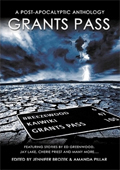OBAMA ADMINISTRATION: PROTECT BORDER RODENTS, NOT CITIZENS
By
NWV News writer Jim Kouri
Posted 1:00 AM Eastern
June 23, 2010
© 2010 NewsWithViews.com
While the Obama Administration allows Mexican drug smuggling violence to shut down thousands of acres of public parklands in Arizona, it’s giving the state more than a million bucks to save an “endangered” rodent, according to a Washington, DC watchdog group.
This inconceivable example of government waste was exposed this week by a major news organization -- ABC News -- that reveals the feds have given Arizona $1.25 million to build bridges for endangered squirrels to cross over a mountain road.
The new structures will keep the squirrels from becoming road kill and will therefore allow officials to monitor their health, claims Judicial Watch, a public-interest group that investigates government corruption.
The project is essential because the Mount Graham red squirrels are on the verge of extinction and cars kill approximately five a year near the mountainous area where around 250 of them live. The taxpayer dollars will be used to build rope bridges over the road that runs through the squirrels’ habitat. More than 40 canopy tunnel crossings will be erected at a cost of $400,000 each.
Incredibly, the federal government refuses to allocate the resources necessary to battle the Mexican smuggling violence that has overrun the state. The problem is so severe that 3,500 acres of taxpayer-funded parklands in Arizona have been shut to U.S. citizens out of safety concerns created by Mexican drug and human smugglers. The section of land is part of the Buenos Aires National Wildlife Refuge and extends north from the international border for about three quarters of a mile.
In the past, officials from the Government Accountability Office testified before members of the U,S. Congress on three separate occasions in order to describe security vulnerabilities that terrorists could exploit to enter the country. Yet, even with reports of border security deficiencies, President Barack Obama cut the number of Border Patrol agents.
According to a report obtained by the Terrorism Committee of the National Association of Chiefs of Police, the GAO's first two testimonies focused on covert testing at ports of entry -- the air, sea, and land locations where international travelers can legally enter the United States.
In its third testimony, the GAO focused on limited security assessments of unmanned and unmonitored border areas between land ports of entry.
GAO officials were asked to summarize the results of covert testing and assessment work for these three testimonies. This report discusses the results of testing at land, sea, and air ports of entry; however, the majority of GAO's work was focused on land ports of entry. The unmanned and unmonitored border areas GAO assessed were defined as locations where the government does not maintain a manned presence 24 hours per day or where there was no apparent monitoring equipment in place.
GAO investigators identified numerous border security vulnerabilities, both at ports of entry and at unmanned and unmonitored land border locations between the ports of entry. In testing ports of entry, undercover investigators carried counterfeit drivers' licenses, birth certificates, employee identification cards, and other documents, presented themselves at ports of entry and sought admittance to the United States dozens of times.
They arrived in rental cars, on foot, by boat, and by airplane. They attempted to enter in four states on the northern border (Washington, New York, Michigan, and Idaho), three states on the southern border (California, Arizona, and Texas), and two other states requiring international air travel (Florida and Virginia).
In nearly every case, government inspectors accepted oral assertions and counterfeit identification provided by GAO undercover investigators as proof of U.S. citizenship and allowed them to enter the country. In total, undercover investigators made 42 crossings with a 93 percent success rate. On several occasions, while entering by foot from Mexico and by boat from Canada, covert investigators were not even asked to show identification.
For example, at one border crossing in Texas, an undercover investigator attempted to show a Customs and Border Protection (CBP) officer his counterfeit driver's license, but the officer said, "That's fine, you can go" without looking at it.
As a result of these tests, GAO concluded that terrorists could use counterfeit identification to pass through most of the tested ports of entry with little chance of being detected.
In its most recent work, GAO shifted its focus from ports of entry and primarily performed limited security assessments of unmanned and unmonitored areas between ports of entry. The names of the states GAO visited for this limited security assessment have been withheld at the request of Customs and Border Protection officials.
In four states along the U.S.-Canada border, GAO covert investigators found state roads that were very close to the border that CBP did not appear to monitor. In three states, the proximity of the road to the border allowed investigators to cross undetected, successfully simulating the cross-border movement of radioactive materials or other contraband into the United States from Canada.
For example, in one apparently unmanned, unmonitored area on the northern border, the U.S. Border Patrol was alerted to GAO's activities through the tip of an alert citizen. However, the responding U.S. Border Patrol agents were not able to locate the investigators and their simulated contraband.
Also on the northern border, GAO investigators located several ports of entry in one state on the northern border that had posted daytime hours and were unmanned overnight. Investigators observed that surveillance equipment was in operation, but that the only preventive measure to stop an individual from crossing the border into the United States was a barrier across the road that could be driven around.
| Subscribe to the NewsWithViews Daily News Alerts! |
GAO officials also identified potential security vulnerabilities on federally managed lands adjacent to the U.S.-Mexico border. GAO concluded that CBP faces significant challenges on the northern border, and that a determined cross-border violator would likely be able to bring radioactive materials or other contraband undetected into the United States by crossing the U.S.-Canada border at any of the assessed locations.
© 2010 NWV - All Rights Reserved















